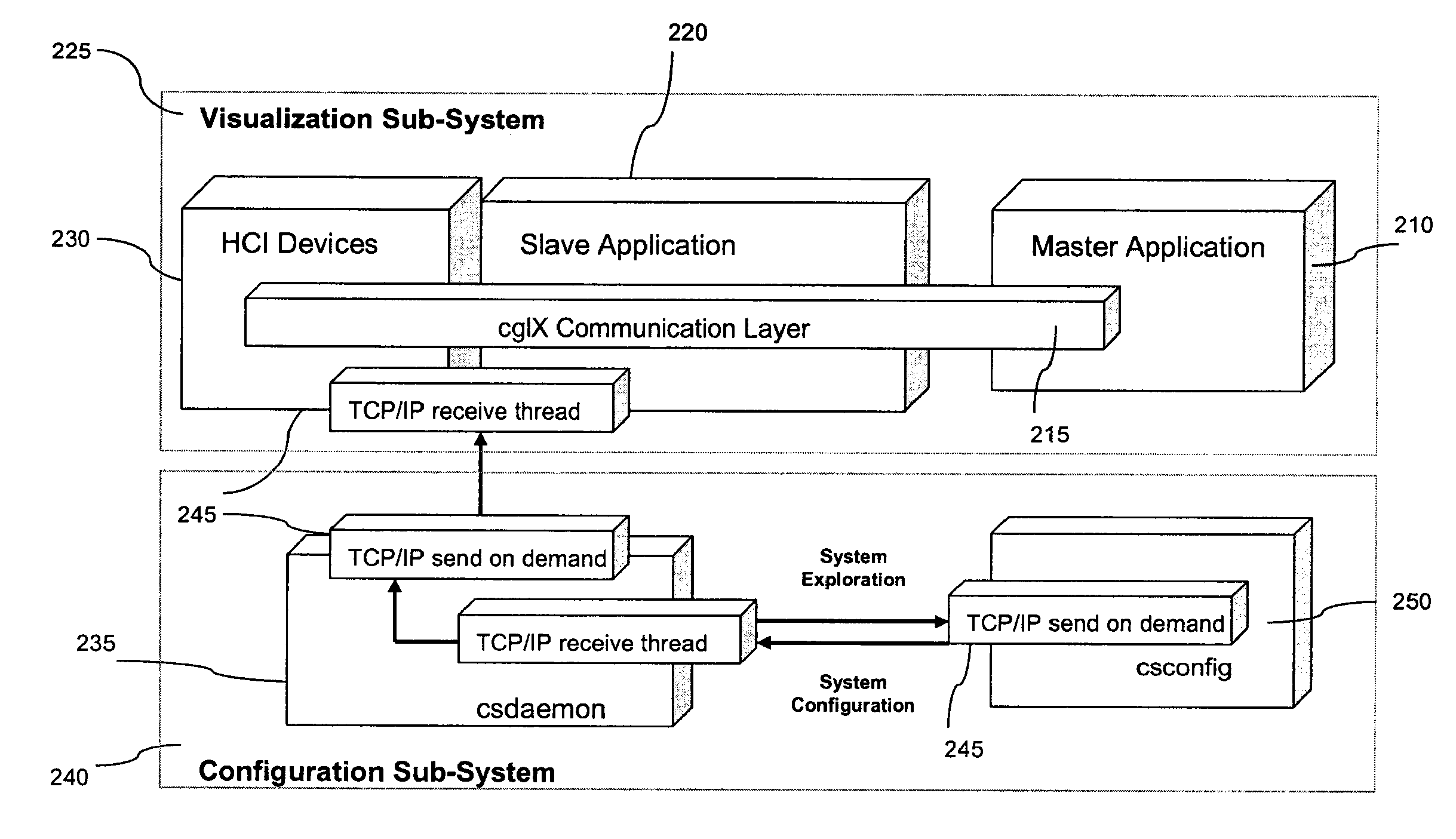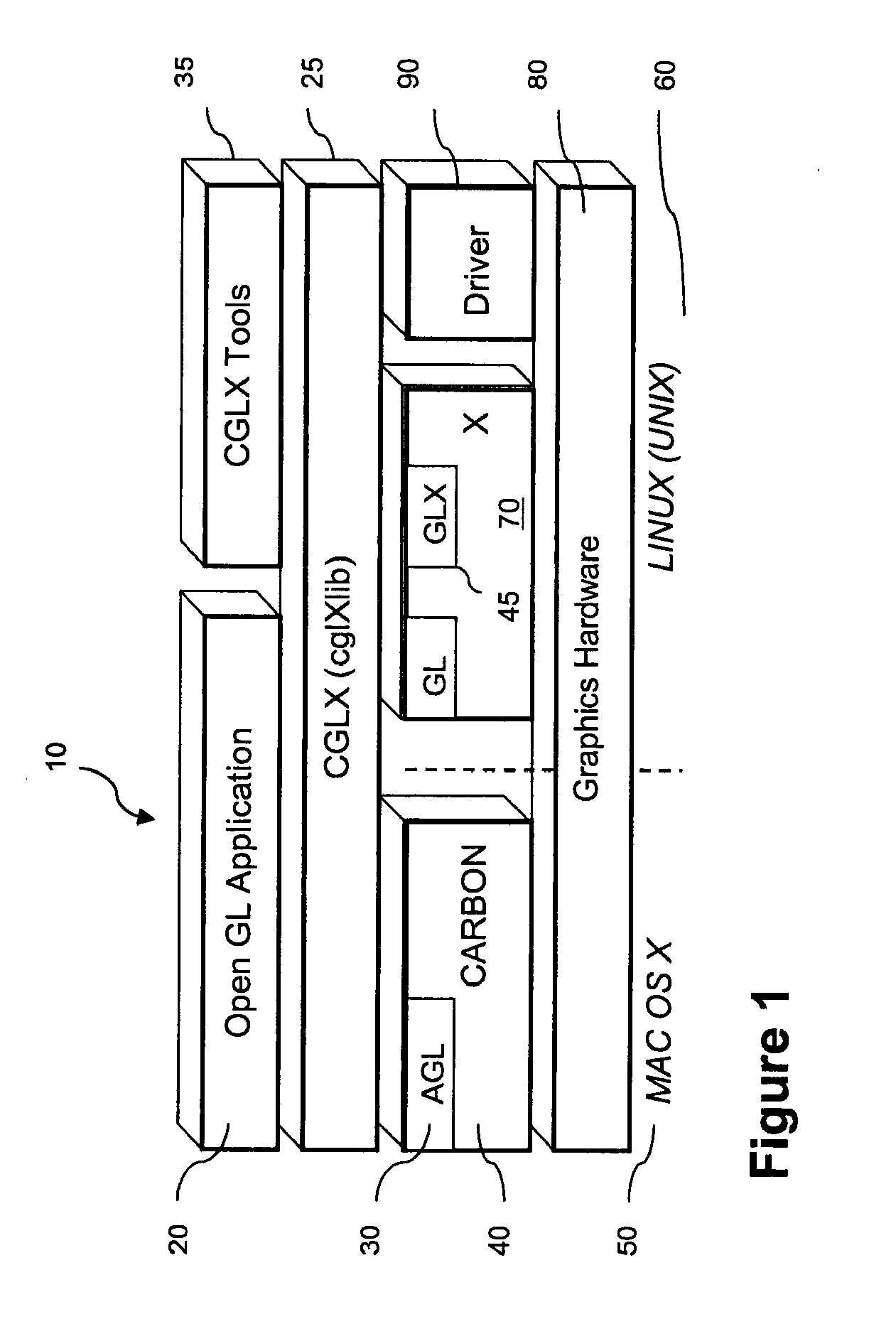Scalable, Cross-Platform Method for Multi-Tile Display Systems
a multi-tile display system and platform technology, applied in the field of multi-tile display system scalable cross-platform display environment cluster graphics method, can solve the problems of reducing the achievable performance of both middleware approaches, reducing the achievable performance, and maximizing computational performance. the effect of cost reduction
- Summary
- Abstract
- Description
- Claims
- Application Information
AI Technical Summary
Benefits of technology
Problems solved by technology
Method used
Image
Examples
Embodiment Construction
[0036]According to the present invention, CGLX manages multiple display configurations across three distinct layers including the network layer 800, the cluster layer 815 and the render node layer 820, as shown in FIG. 6. The network layer 800 allows users to configure distributed tiled display systems and start applications across the network. On the cluster layer 815 the method and / or system handles event distribution and synchronization of the graphics context and content as well as frame and event synchronization. The synchronization of buffer swaps is implemented as software solution and is exchangeable with the implemented support for hardware frame / swap synchronization if this feature is also supported by the graphics cards 80 (see FIG. 1) in the visualization grid 1100 (see FIG. 8). The visualization grid 1100 includes one or more master nodes 85 (control nodes) and multiple slave nodes 55, 65 and / or 75 (render nodes, display nodes, see FIG. 8)). On current graphics cards th...
PUM
 Login to View More
Login to View More Abstract
Description
Claims
Application Information
 Login to View More
Login to View More - R&D
- Intellectual Property
- Life Sciences
- Materials
- Tech Scout
- Unparalleled Data Quality
- Higher Quality Content
- 60% Fewer Hallucinations
Browse by: Latest US Patents, China's latest patents, Technical Efficacy Thesaurus, Application Domain, Technology Topic, Popular Technical Reports.
© 2025 PatSnap. All rights reserved.Legal|Privacy policy|Modern Slavery Act Transparency Statement|Sitemap|About US| Contact US: help@patsnap.com



